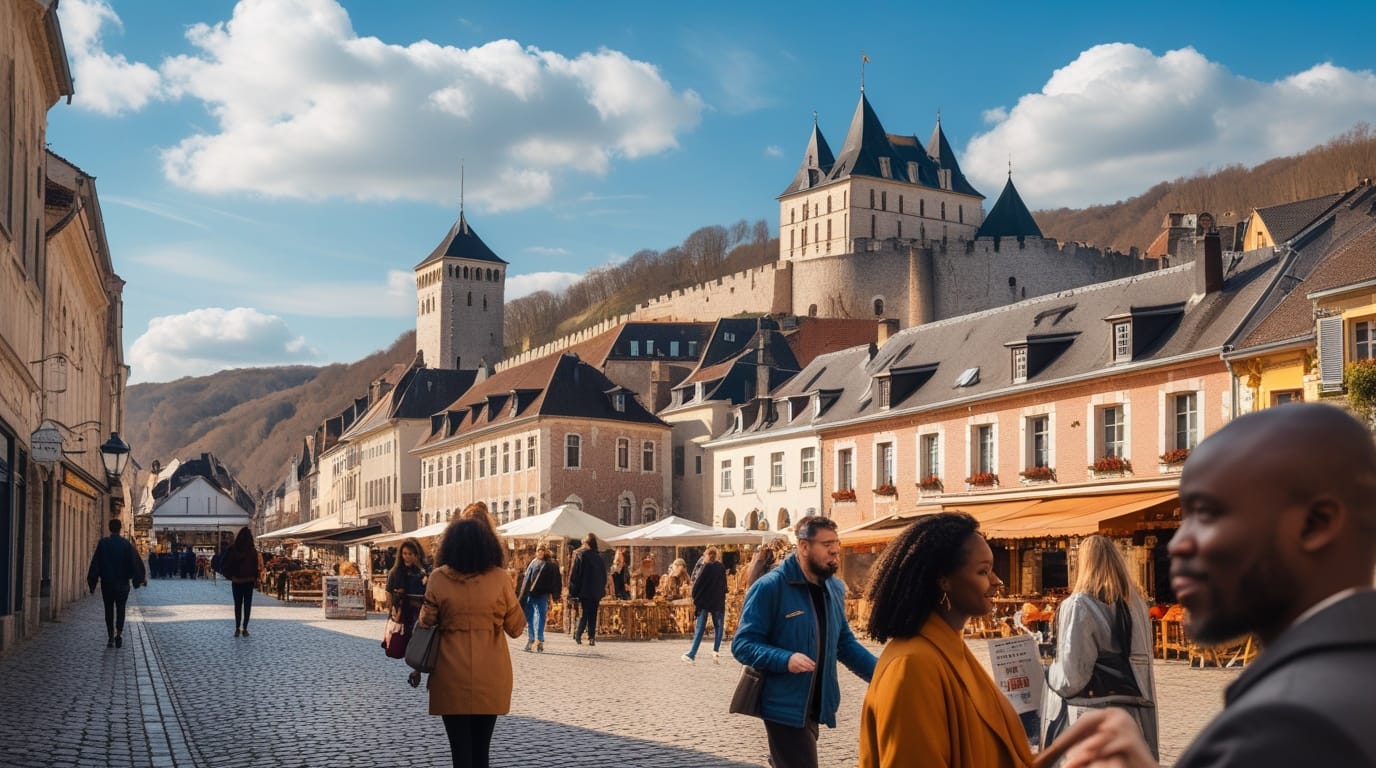Sarajevo: Where East Meets West – A Cultural and Historical Journey
Introduction
Sarajevo, the capital of Bosnia and Herzegovina, is a city where history breathes through every cobblestone. Known as the “Jerusalem of Europe” for its religious diversity, Sarajevo is a mesmerizing blend of Ottoman charm, Austro-Hungarian elegance, and resilient modernity shaped by its tumultuous past.
1. A Walk Through Time: Sarajevo’s Architectural Layers
Sarajevo’s skyline reflects its multicultural past—Ottoman mosques stand beside Austro-Hungarian palaces, while socialist-era buildings bear scars from the 1990s siege.
Key Landmarks:
🏛 Baščaršija (Old Bazaar) – The Ottoman heart of Sarajevo, where coppersmiths still craft traditional cezve (coffee pots).
🏛 Latin Bridge – Where Archduke Franz Ferdinand’s assassination sparked WWI.
🏛 Vijećnica (City Hall) – A stunning Austro-Hungarian masterpiece, rebuilt after being destroyed in the war.
🏛 Sarajevo National Theatre – A cultural hub hosting opera, ballet, and drama since 1921.
Pro Tip: Take a free walking tour to understand how these architectural styles coexist.
2. The Soul of Sarajevo: Bosnian Coffee & Café Culture
Bosnian coffee in Sarajevo isn’t just a drink—it’s a ritual. Served in a džezva (small pot) with a cube of sugar and rahat lokum (Turkish delight), it’s best enjoyed at:
☕ Čajdžinica Džirlo – A 100-year-old teahouse in Baščaršija.
☕ Ministry of Ćejf – A modern take on traditional coffee culture.
Fun Fact: Unlike Turkish coffee, Bosnian coffee is slightly milder and served with a glass of water to cleanse the palate.
3. Austro-Hungarian Sarajevo: Europe’s Forgotten Gem
When the Austro-Hungarian Empire took over in 1878, they transformed Sarajevo into a Central European capital. Key spots include:
🎭 Sarajevo National Theatre – A neo-Renaissance jewel.
🏦 Emperor’s Mosque – Gifted by Franz Joseph I after a fire.
🚂 Sarajevo Railway Station – A Habsburg-era beauty still in use.
Hidden Gem: The Svrzo House, an Ottoman-Austrian hybrid home turned museum.
4. Sarajevo’s Festivals & Events: A City That Celebrates Life
Despite its war scars, Sarajevo thrives with cultural happenings:
🎥 Sarajevo Film Festival (August) – The Balkans’ biggest cinema event.
🎶 Jazz Fest Sarajevo (November) – Intimate concerts in historic venues.
🍷 Sarajevo Winter Festival (February) – Music, theater, and art against snowy backdrops.
Local Insight: The Baščaršija Nights festival (July) turns the old town into an open-air stage.
5. Sarajevo Museums & Memorials: Confronting the Past
The city doesn’t shy away from its painful history:
🕊 War Childhood Museum – Personal stories from the 1990s siege.
💣 Tunnel of Hope – A lifeline dug under the airport during the war.
🎨 Gallery 11/07/95 – A harrowing exhibit on the Srebrenica genocide.
Powerful Experience: Walk the Sarajevo Roses—concrete scars filled with red resin to mark mortar explosions.
6. Must-Try Food in Sarajevo: A Culinary Pilgrimage
Bosnian cuisine is a hearty mix of Ottoman and Slavic flavors. Don’t miss:
🍴 Ćevapi – Minced-meat sausages in somun bread (try at Željo).
🍲 Begova Čorba – A rich chicken-and-vegetable soup.
🍮 Tufahije – Walnut-stuffed apples in syrup.
Offbeat Pick: Trout from the Miljacka River, served at riverside restaurants.
7. Unique Local Experiences
- Hike to the Yellow Fortress for sunset views over the city.
- Shop for handmade copperware at Kazandžiluk Street.
- Take a day trip to Lukomir, Bosnia’s highest village.
Why Sarajevo Stays With You
Sarajevo isn’t just a city—it’s a living museum of resilience. Between its war history, vibrant festivals, and unforgettable food, it leaves visitors with a profound sense of connection.
Ready to explore? Wander its streets, talk to locals, and let Sarajevo’s spirit unfold.





Leave a Reply